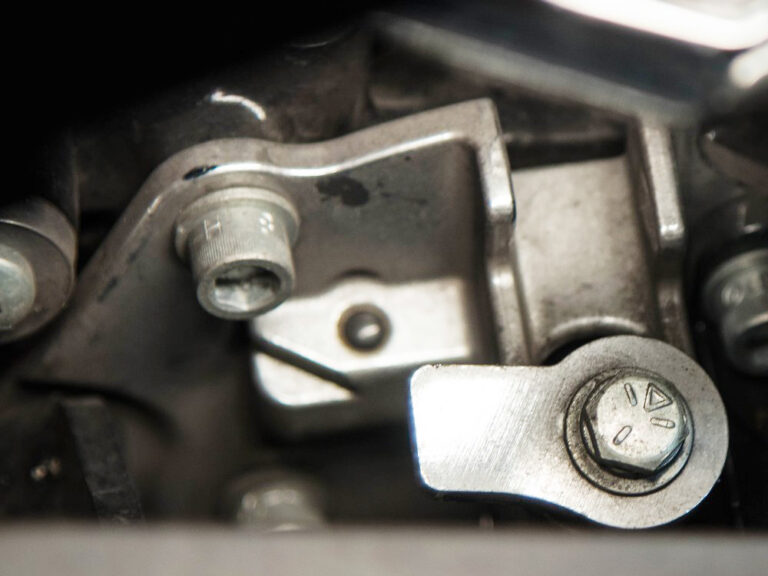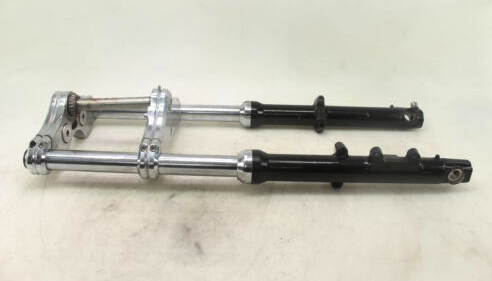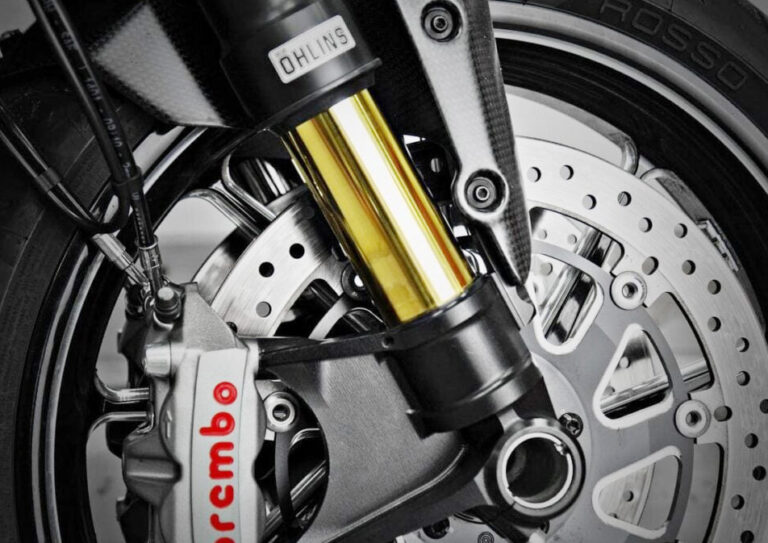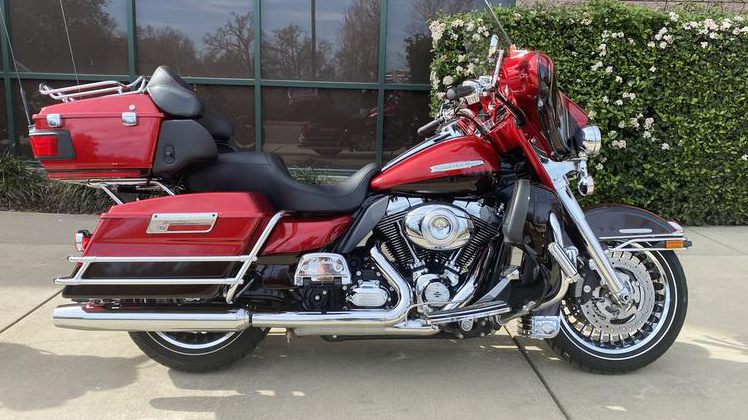Harley Davidson 103 Engine Problems
The Harley-Davidson 103 engine has been known to suffer from a few common problems. The most commonly reported issue is oil leaks, which can be caused by worn or damaged gaskets and seals. Excessive oil consumption is another problem that may require regular maintenance such as replacing the piston rings or cleaning out the crankcase vent tube.
Other issues include difficulty starting, rough idle, poor acceleration, and unusual noises such as knocking or rattling coming from the engine. If any of these issues are present it’s important to have them checked out by a qualified technician to determine what repairs need to be made in order to get your motorcycle back up and running properly again.
Harley Davidson is known for its iconic motorcycles and devoted fan base, but even the most reliable bikes can have some issues from time to time. The Harley-Davidson 103 engine is no exception, with a few common problems that riders should be aware of. The first issue with the 103 engine is that it tends to overheat quickly when ridden in hot weather or at high speeds for extended periods of time.
This can lead to damage to the cylinder heads, pistons, and other components if not addressed properly. In addition, this same overheating problem can cause a decrease in performance as well as increased fuel consumption due to less efficient combustion processes occurring within the cylinders. Another common problem associated with the Harley-Davidson 103 engine is oil leakage from either the crankcase breather valve or various seals throughout the motor.
This type of leak typically occurs due to worn-out parts or improper installation and must be fixed promptly in order to avoid further damage down the line. Lastly, owners may also experience vibration problems when riding their bikes due to an imbalance in weights between different components within the motor such as pistons or flywheels. If left unchecked, this vibration could eventually affect other parts such as wheel bearings and suspension systems so it’s important that any imbalances are identified and corrected before further damage occurs.
Is the 103 Harley Engine Reliable?
If you’re considering purchasing a Harley Davidson motorcycle, then you may be wondering if the 103 Harley engine is reliable. The answer is yes – the 103 Harley engine has proven to be very dependable and efficient for riders. The 103 cubic inches (1690cc) air-cooled V-Twin engine was first introduced in 2009 as part of the touring lineup from Harley Davidson.
It quickly became one of their most popular engines due to its superior power and reliability, offering up to 100 ft/lbs of torque at 3,500 rpm and 105 horsepower at 5,000 rpm. This impressive performance makes it ideal for long rides or highway cruising on your bike. Harley Davidson uses quality components when building their engines, which helps ensure they are durable and reliable over time.
In addition to this strong construction process, they also use an advanced oiling system that keeps all of the moving parts well-lubricated while riding – something that other manufacturers don’t always pay attention to! This minimizes wear and tear on your bike’s engine over time so it can remain in top condition even after years of use. But perhaps more important than anything else is how well maintained the a103 Harley engine needs to be in order for it to stay running smoothly over time; regular maintenance such as oil changes every few thousand miles will help keep your motor running efficiently without any issues down the line!
Which Harley Motor is the Most Reliable?
When it comes to choosing a reliable Harley motor, there isn’t one single answer that works for everyone. It all depends on your individual needs and preferences regarding performance, power, and reliability. That being said, the most reliable Harley motor may very well be the Milwaukee-Eight engine series.
First introduced in 2017 on select models of Street Glide Specials and Road Kings, the Milwaukee-Eight (M8) is an evolution of the Twin Cam 103 engine which was used from 1999 through 2016. The M8 brings several improvements over its predecessor including increased displacement up to 114 cubic inches (1868 cc), an improved cooling system with four valves per cylinder instead of two found in earlier designs, as well as reduced vibration at idle speeds due to a counterbalancing system that runs off both ends of the crankshaft. The M8 also features more efficient oil circulation which helps reduce internal component wear and tear by providing better lubrication throughout its life cycle.
In addition to this feature, it includes a higher compression ratio than previous models resulting in improved fuel efficiency without sacrificing much power output when compared to other engines within Harley’s lineup such as V-Twin or High Output twins like those found on Softails or Dynas.
How Many Miles Per Gallon Does a 103 Harley-Davidson Get?
When it comes to the question of how many miles per gallon a 103 Harley-Davidson gets, the answer depends on several factors. The year and model of the bike as well as rider weight, riding style, and terrain will all have an impact on fuel economy. However, in general terms, most Harley-Davidson 103 models can be expected to get around 35 MPG (miles per gallon).
Harley Davidson’s 103 cubic inch engine is a powerful V-twin that offers great performance and reliability. It was introduced in 2009 for use in Touring bikes such as Street Glide and Road Glide models, CVOs (Custom Vehicle Operations) like Ultra Classic Electra Glide and TriGlides, and Softails like Fat Boy Lo or Heritage Softail Classic. But with this power also comes increased fuel consumption compared to smaller engines so if you are looking for maximum efficiency you may want to look at other options such as Sportsters or Dynas.
However, even though they may not be able to compete with some of the newer bikes out there when it comes to sheer mpg numbers it’s important not to forget that these big Harleys provide a unique riding experience that cannot always be quantified by raw figures alone! So while you might sacrifice some mileage when choosing one of these iconic American machines make sure you take into account all aspects before deciding what is right for you!
What is the Harley 103 Engine Called?
If you’re a fan of Harley-Davidson motorcycles, then chances are you’ve heard about the Harley 103 engine. The Harley 103 is one of the most popular and powerful engines used in Harley Davidson motorcycles today. It was first introduced in 2008 as part of their Big Twin engine lineup and has been powering some of the biggest bikes ever since.
The name “103” comes from its displacement size; it has a total displacement size of 1,690 cubic centimeters (103 cubic inches). This makes it slightly bigger than traditional Big Twins like the 80ci Evolution or 88ci Twin Cam models that came before it. The main advantage of this larger engine is increased power output.
Compared to previous Big Twin engines, the 103 produces 10 percent more torque at lower RPMs for better acceleration and hill-climbing ability. Additionally, due to its larger size, it also requires less frequent maintenance intervals which can save riders money over time on upkeep costs. In addition to these advantages, there are several other features that make this engine stand out amongst other Harley engines:
Electronic Sequential Port Fuel Injection (ESPFI): This fuel injection system allows for precise control over fuel delivery by detecting changes in air pressure throughout each combustion cycle for optimal performance and efficiency levels every ride.
Harley Davidson 103 Engine Life Expectancy
If you’re a Harley Davidson enthusiast, then you know that the 103 engine is one of the most iconic and reliable engines in the Harley line-up. But what is its life expectancy? That’s an important question to consider when investing in such a powerful piece of machinery.
The good news is that with proper maintenance, your Harley Davidson 103 engine should last up to 100,000 miles or more. This means that if you put on 10k-15k miles per year (which is standard for many riders), your bike should still be running strong after 6-10 years of ownership. But it’s not just about mileage; regular servicing and preventative maintenance are essential for getting the most out of your engine’s lifespan.
Basic service intervals include oil changes every 5K miles along with spark plug replacement at 25K mile intervals (or sooner). Additionally, some riders choose to upgrade their air filters at 15K mile intervals as well as replace their fuel filter every 50K miles or so. These simple steps will go a long way toward making sure your Harley stays healthy for years to come!
It also helps to understand how various riding styles can affect the longevity of an engine like this one – aggressive riding with frequent acceleration from low RPMs puts extra strain on components like pistons and cylinder walls which can wear down over time and cause premature failure if left unchecked.
Harley 103 Vs 107 Reliability
Harley Davidson is one of the most iconic motorcycle brands in the world, and they offer a wide range of powerful engines to choose from. Among their offerings are two popular models: the 103 and 107. While both are reliable choices for riders, there are some key differences between them that should be taken into consideration before making a purchase.
The Harley 103 engine was released in 1999 as an upgrade to its predecessor, the 88 CI (1,450 ccs) engine. It has a slightly larger displacement at 1,690 cc which provides more power than its predecessor while still being considered relatively small by modern standards. The 103 is also known for its reliability; with proper maintenance, it can provide years of trouble-free riding experience.
The 107 was introduced in 2017 as part of Harley’s Milwaukee 8 lineup and offers improved performance over previous generations thanks to increased displacement size at 1,753 cc combined with improved airflow management technology across all cylinders. Like the 103 it is also known for being quite reliable when properly maintained but has been more prone to issues related to cooling due to its higher output compared to other models. This means that extra care must be taken when using this model on hotter days or long rides where heat build-up could become an issue if not monitored closely enough.
Harley Twin Cam Years to Avoid
When it comes to purchasing a Harley Twin Cam, there are certain years that should be avoided. While the Twin Cam is arguably one of the most reliable engines in Harley-Davidson’s lineup, there have been several issues with certain models over the years. To ensure you get your money’s worth and purchase a bike that will last for many years to come, here is an overview of some of the Harley Twin Cam years to avoid.
The first year to consider avoiding when shopping for a used Harley Twin Cam is 1999. This was the first year that this engine was released and as such had numerous problems associated with it; including faulty fuel injection systems and oil pump failures due to inadequate lubrication in cold weather conditions. Additionally, riders were also affected by stalling issues from time to time which can be incredibly frustrating on long rides or during high-speed runs.
Another model year that should be avoided when looking for a used Harley Twin Cam is 2003. This year saw an increase in piston failure rates due to excessive heat build-up caused by inadequate cooling systems and poorly designed cylinder heads leading to preignition detonation; basically meaning your bike could explode at any moment! Additionally, owners experienced poor acceleration performance due to weak spark plugs resulting from the insufficient electrical output from its ignition system components; further exacerbating these already serious issues and making this engine unreliable at best.
Conclusion
Are you having trouble with your Harley Davidson 103 engine? If so, you’re not alone! Many riders have reported issues with the 103 engine, from overheating to oil leaks and more.
In this blog post, we’ll discuss some of the common problems associated with the 103 engine, as well as what you can do to fix them. We’ll also talk about ways to keep your bike running smoothly in the future. So if you’re ready, let’s dive in and find out what’s wrong with your Harley Davidson 103 engine!



